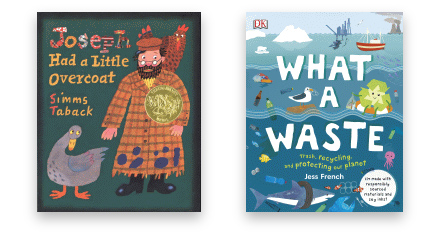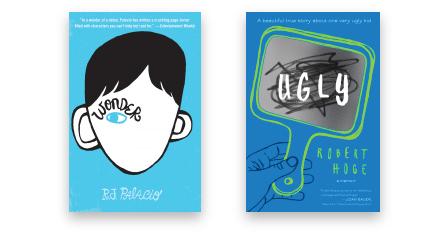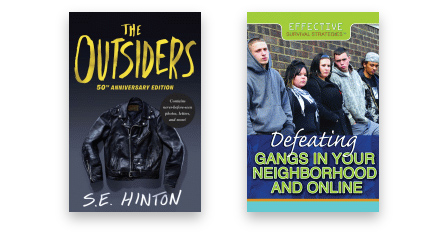by Katy Tessman, New School Services Project Manager and Makerspace Specialist at Mackin
Classrooms are filled with a variety of learners and therefore classrooms should be filled with a variety of books. While some students find fiction books more appealing, other students are more drawn to nonfiction titles.1 When classroom libraries have a variety of fiction and nonfiction titles, there is more potential for students to try reading something different. Pairing fiction and nonfiction texts will help engage all students in a variety of subjects. Students’ vocabulary and knowledge about a common topic will be broadened when fiction and nonfiction books are paired in your classroom library.2
The following are five questions to ask yourself when pairing fiction and nonfiction texts:
1. Are there topics fiction and nonfiction books share?
What topics will be taught in your classroom? All true subjects, like World War II, unlikely animal friends, or even the weather can easily be paired with fictional stories on the same subject.
2. What are your learners’ goals?
Opportunities to teach multiple standards at once are always beneficial for students (and teachers!). When nonfiction and fiction texts are paired together, students can explore how fictional stories and true events are described by studying points of view. Learners are exposed to both content and literacy standards simultaneously.
3. Do you see any connections and differences?
After reading paired texts, students will be able to draw information from both the fiction and nonfiction texts to identify connections and differences. Students can wrestle with what is not true, and why the author chose to write in fiction versus what is true and factual.
4. Am I considering all formats of text?
Shorter texts, like picture books, are often more accessible to students.3 When looking for nonfiction pairings, consider magazine articles, infographics, recorded speeches, even The Declaration of Independence can tie to a fictional book.
5. What’s the difference between story and truth?
One of the wonderful benefits of pairing fiction with nonfiction is noticing when students learn that some stories have true facts woven into them.4 No matter the genre of the book, informational nonfiction texts can help students learn more about the things they discover in fictional stories.
The following are three examples of pairing fiction and nonfiction based on a shared topic:
Elementary Pairing Topic:
Conservation / Recycling
 Fiction: Joseph Had a Little Overcoat by Simms Taback is a fictional story about a very old overcoat that has been recycled numerous times.
Fiction: Joseph Had a Little Overcoat by Simms Taback is a fictional story about a very old overcoat that has been recycled numerous times.
Nonfiction: What a Waste by Jess French is a nonfiction book that teaches young students about how our actions affect planet Earth.
Middle Grade Pairing Topic:
Kindness / Differences
 Fiction: Wonder by R.J. Palacio is the fictional story about Auggie who was born with a facial difference and has been homeschooled his entire life, but now he’s starting fifth grade at Beecher Prep and dealing with classmates for the first time.
Fiction: Wonder by R.J. Palacio is the fictional story about Auggie who was born with a facial difference and has been homeschooled his entire life, but now he’s starting fifth grade at Beecher Prep and dealing with classmates for the first time.
Nonfiction: Ugly by Robert Hoge is a real-life story about a boy who was born with a tumor the size of a tennis ball in the middle of his forehead. After several surgeries he was left with a completely unique face. The book is about growing up and dealing with strangers staring at him and being bullied by classmates.
High School Pairing Topic:
Teen Violence / Friendships
 Fiction: The Outsiders by S.E. Hinton is the classic story about Ponyboy and his brothers. They run into trouble with the Socs, a vicious gang of rich kids whose idea of a good time is beating up on “greasers” like Ponyboy.
Fiction: The Outsiders by S.E. Hinton is the classic story about Ponyboy and his brothers. They run into trouble with the Socs, a vicious gang of rich kids whose idea of a good time is beating up on “greasers” like Ponyboy.
Nonfiction: Defeating Gangs in Your Neighborhood and Online by Philip Wolny is a guide that discusses the real threat to young people by gangs in the United States. The book provides resources for how to deal with gangs including avoiding them, keeping friends out of them, and finding resources to stop the violence.
As educators, one of our goals is to encourage and foster a love of reading. Pairing fiction and nonfiction books in classroom libraries can help bridge the gap between readers.5 The students benefit from having a variety of different types of texts available. When a classroom library is filled with many different sets of fiction/nonfiction pairs, students will be more tempted to read both texts to gain more understanding of a topic.6 Reading fiction/nonfiction pairs creates a more engaging way to learn.
Resources:
1 Hathaway, J. (15 Feb 2019). The Best of Both Worlds: Pairing Fiction and Nonfiction Texts [online] Teacher Created Materials. Available at https://www.teachercreatedmaterials.com/blog/article/the-best-of-both-worlds-pairing-fiction-and-nonfiction-texts/
2 Richardson, J. (n.d.). How to Engage Students by Pairing Fiction and Nonfiction Texts [online] Minds In Bloom. Available at https://minds-in-bloom.com/how-to-engage-students-fiction-nonfiction-texts/
3 Kane, K. (27 Oct 2017) 14 Tips for Pairing Fiction with Nonfiction in Grades K–5 Make both genres come alive for your readers. [online] We Are Teachers. Available at https://www.weareteachers.com/tips-pairing-fiction-nonfiction-grades-k-5/
4 Powerful Pairings: Read-Alouds for Working with the Common Core. [online] Teachers First. Available at https://www.teachersfirst.com/exclusives/moreless/librarian/pairings_lower.cfm?utm_source=WEARETEACHERS&utm_medium=ArticleTWO&utm_content=GreatBooks_1606_ArtSer
5 Fiction and Non-Fiction Pairs in the Classroom Library. [online] Scholastic. Available at https://www.scholastic.com/teachers/articles/teaching-content/fiction-non-fiction-book-pairs-classroom-library/
6 Johnson, A. (19 Apr 2017). Engaging Readers with Fiction/Nonfiction Pairings. [online] School Library Journal. Available at https://www.slj.com/?detailStory=engaging-readers-with-fictionnonfiction-pairings






